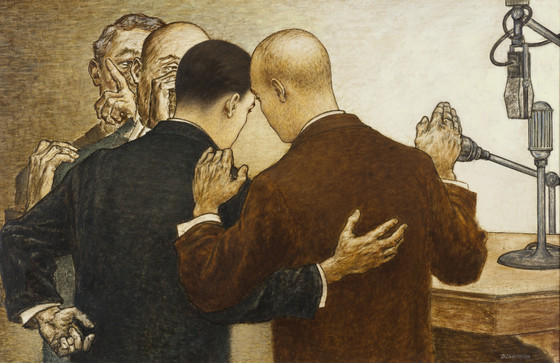Conspiracy
Please log in to add this item to your gallery.
View comments
No comments have been posted yet.
Add a comment
Please log in to add comments.
Please log in to add tags.
* Nearly 20,000 images of artworks the museum believes to be in the public domain are available to download on this site.
Other images may be protected by copyright and other intellectual property rights.
By using any of these images you agree to LACMA's Terms of Use.
Conspiracy
Paintings
Oil on board
Canvas: 26 1/2 × 41 1/2 in. (67.31 × 105.41 cm)
Frame: 28 1/2 × 43 1/4 × 2 1/2 in. (72.39 × 109.86 × 6.35 cm)
Purchased with funds provided by the Judith Rothschild Foundation; Hansen, Jacobson, Teller, Hoberman, Newman, Warren & Sloane, L.L.P.; Daniel Greenberg and Susan Steinhauser; the Frederick R. Weisman Philanthropic Foundation; Dr. Judd Marmor; Paul and Suzanne Muchnic; the Reese E. and Linda M. Polesky Family Foundation; and Marvin and Judy Zeidler (M.2002.86)
Not currently on public view
